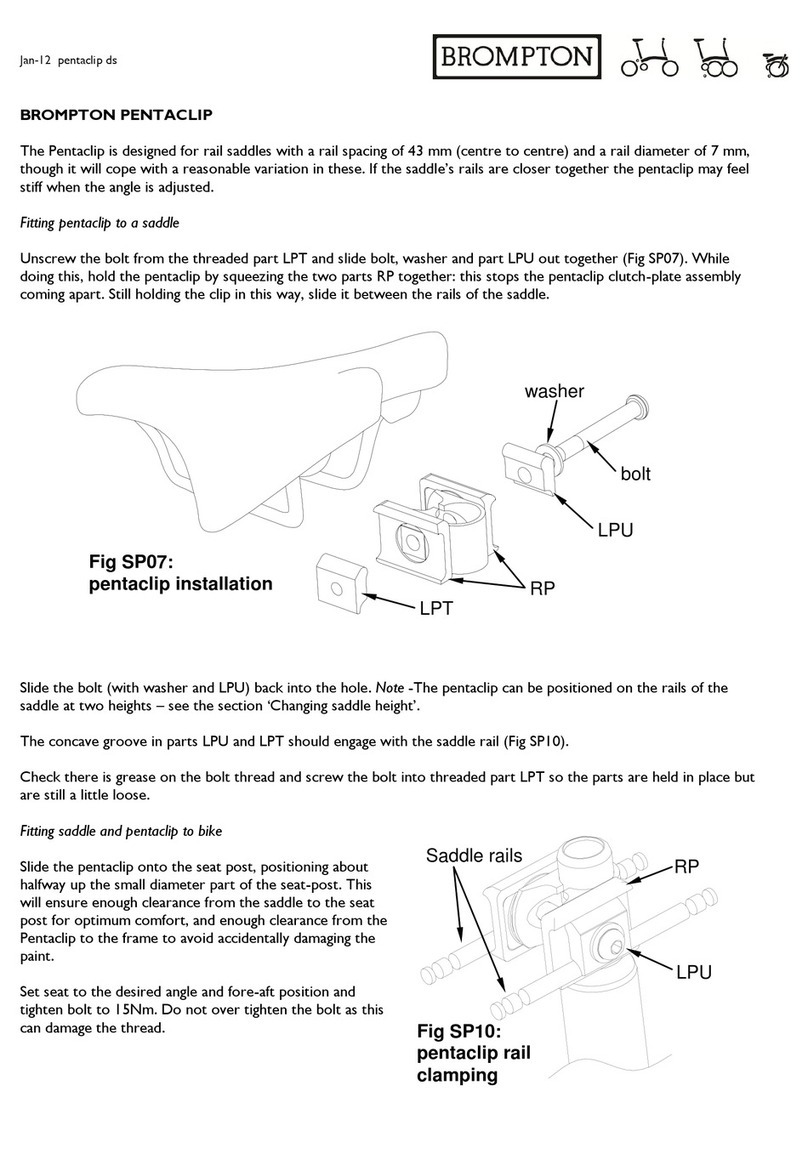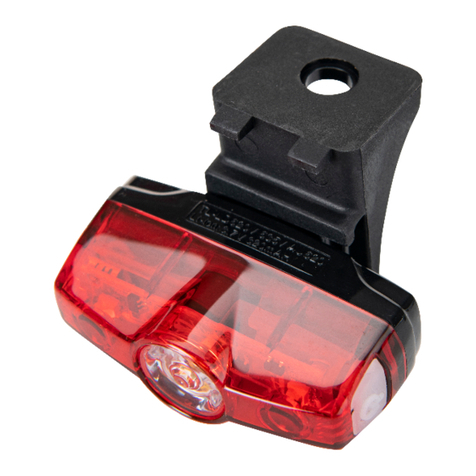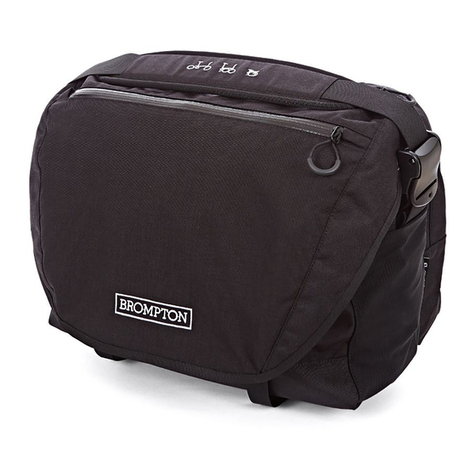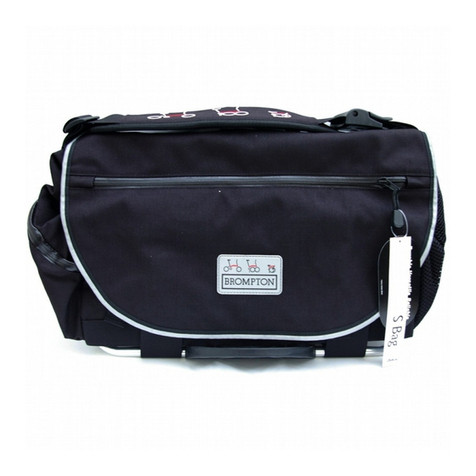
6. Cable routing
Correct cable routing and cable housing length is essential; cables must pass in front of the handlebar, to the left of the
handlebar support and to the right of the main frame tube.
1. Lever angle
The range of lever angle adjustment is restricted by the cable exit path, if the lever is angled too high it will cause prob-
lems for the operation of the brakes and in folding the bike.
When the bike is folded, the right hand brake cable housing will contact the fork leg. The lever angle should be set so
that the cable housing lightly contacts the fork leg; too much contact will bend and damage the housing. For this reason,
the lever blade features a kink allowing the lever blade to sit higher than the lever body this offers a more comfortable
position without affecting the cable housing path.
2. Lever position
The position of the lever on the bar can be adjusted to move the lever closer or further from the end of the handlebar
grip. This adjustment will allow the lever to be positioned for one, two or three nger braking.
Positioning the lever for one nger braking will give a more secure grip on the bar but allow you to apply less braking
force. Three nger braking will allow you to apply maximum braking force but reduce bar grip.
4. Bite-point adjustment
Lever bite-point (engagement position) adjustment is controlled by the barrel adjuster. Screwing the barrel adjuster into
the lever body will bring the lever bite-point closer to the handlebar. Screwing the barrel adjuster outward from the
lever body will move the bite point further from the handlebar.
The barrel adjuster uses a lock ring to secure it in position; this should be loosened before adjustment and tightened
once the barrel adjuster is correctly positioned.
3. Reach adjuster
Lever reach adjustment is controlled by the grub screw on the side of the lever body.
Screwing the reach adjuster into the lever body (using a 2.5mm hex key) will bring the lever closer to the handlebar.
When the lever reach is adjusted closer to the handlebar it will cause the brake pads to move closer to the wheel rim. It
may be neccesary to adjust the lever bite point (engagement position) in order to give sufcient pad clearance; this can
be acheived by screwing the barrel adjuster into the lever body.
If there is not enough adjustment at the barrel adjuster to give sufcient pad clearance and a satisfactory lever bite point,
you may need to loosen the cable clamp bolt (10mm spanner) at the brake caliper to allow some cable to be pulled
through. Be sure to re tighten this bolt to 8Nm and ensure the cable is properly secured before using the bike.
5. Securing the lever
Once the lever has been correctly positioned on the bar, the clamp bolt should be tightened to a torque of 2Nm using a
suitable torque wrench and 3mm hex key tting.























